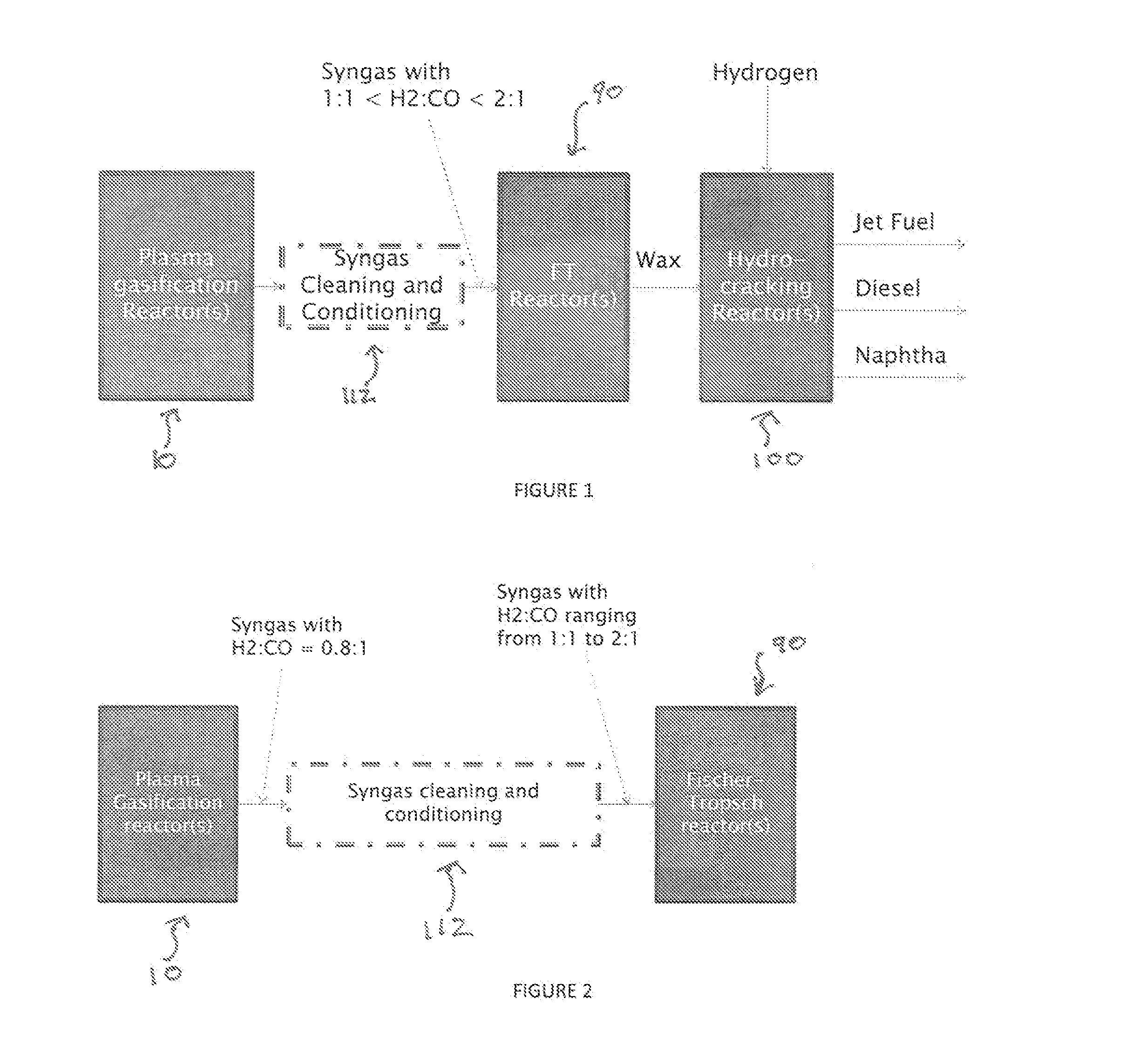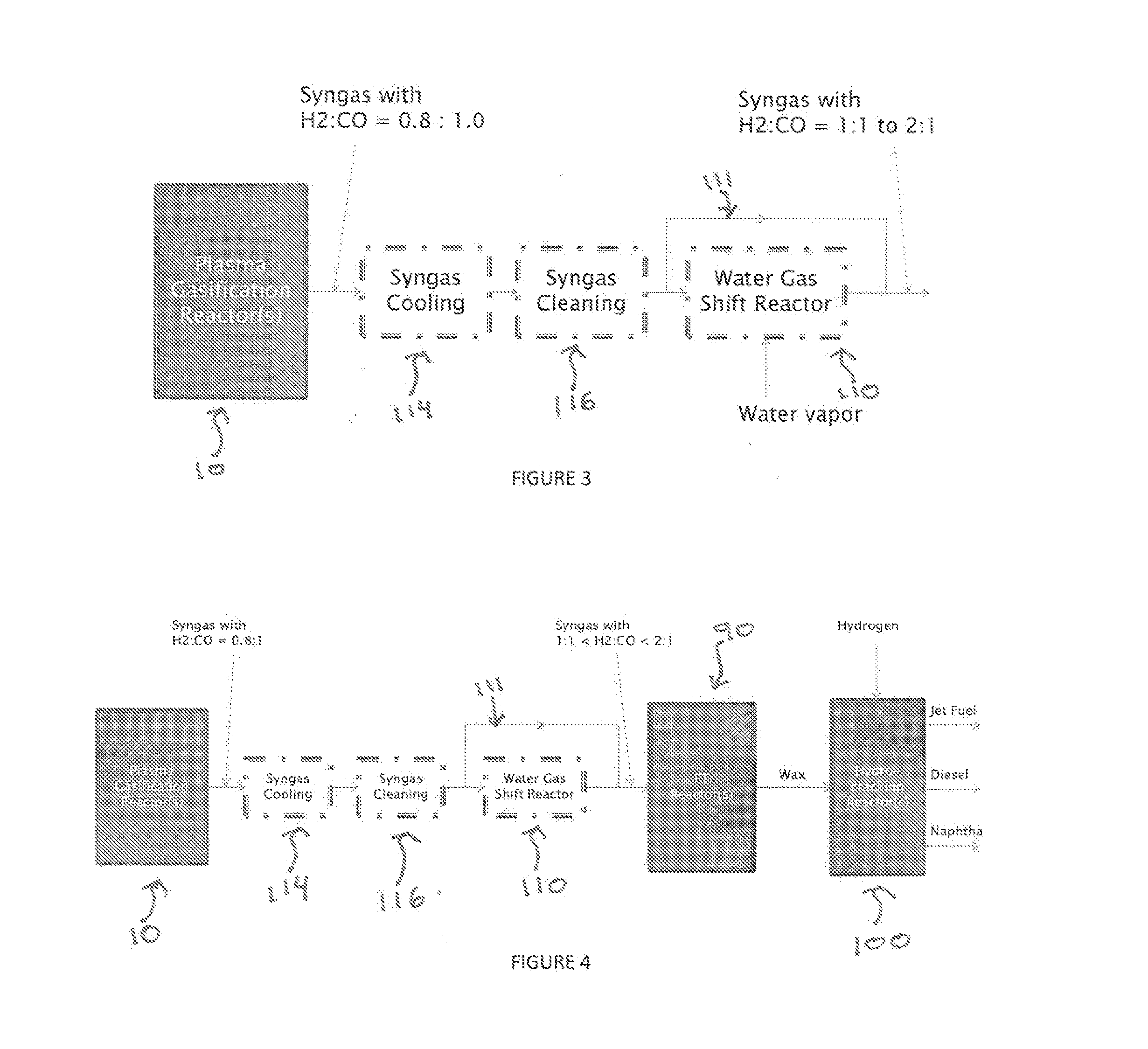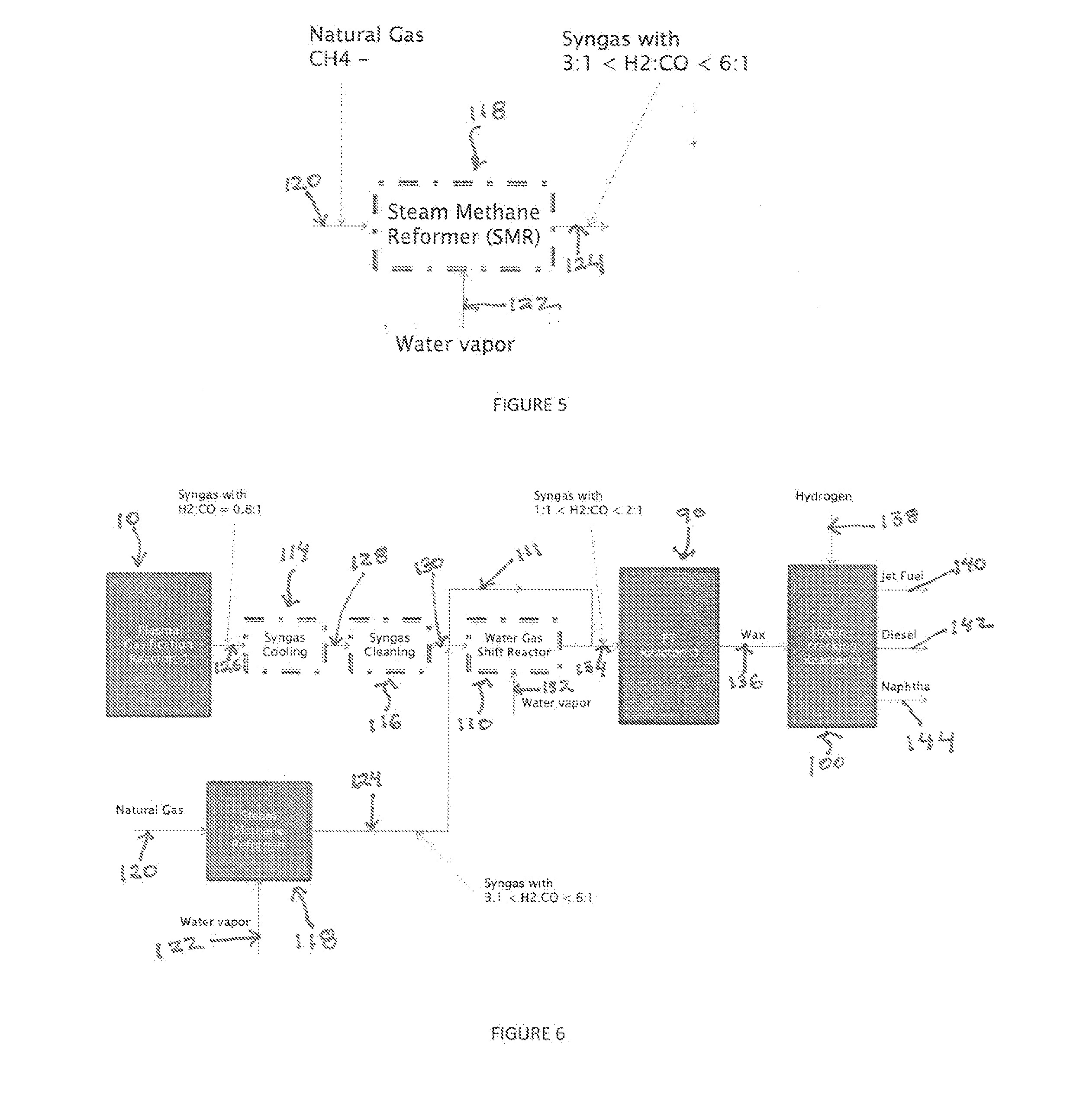Producing Liquid Fuel from Organic Material such as Biomass and Waste Residues
a technology of organic materials and liquid fuels, applied in the direction of waste based fuel, combustible gas catalytic treatment, combustible gas production, etc., can solve the problems of increasing emissions, meeting emission requirements and environmental restrictions, and facing enormous challenges in the transport industry
- Summary
- Abstract
- Description
- Claims
- Application Information
AI Technical Summary
Benefits of technology
Problems solved by technology
Method used
Image
Examples
embodiment 1
[0200]A process for producing liquid fuel from biomass feed stock which comprises:[0201]a) feeding a biomass feedstock into a one stage atmospheric pressure thermocatalytic plasma gasifier, contacting the feedstock with oxygen or oxygen enriched air or steam or mixtures thereof to convert organic components of the biomass into a syngas stream;[0202]b) cooling the syngas through a heat exchanger, cleaning it to remove its particulate matter and chemical impurities and compress it from or about atmospheric pressure to a suitable pressure to meet downstream systems' requirements;[0203]c) splitting the syngas stream into a first stream and a second stream; conveying the first stream to a water gas shift reactor for producing a modified syngas stream containing hydrogen and carbon monoxide at a relative molecular ratio[0204]d) the second stream bypassing the water gas shift reactor and being added to the modified syngas steam from the water gas shift reactor;[0205]e) optionally reforming...
embodiment 2
[0209]The process according to Embodiment 1, wherein said impurities comprise at least one member selected from the group consisting of HCl, NH3, COS, HCN, H2S, and CO2.
embodiment 3
[0210]The process according to Embodiments 1 or 2, wherein the syngas stream from a) is cooled syngas to a temperature of above its dew point.
PUM
| Property | Measurement | Unit |
|---|---|---|
| temperature | aaaaa | aaaaa |
| particle diameter size | aaaaa | aaaaa |
| particle diameter size | aaaaa | aaaaa |
Abstract
Description
Claims
Application Information
 Login to View More
Login to View More - R&D
- Intellectual Property
- Life Sciences
- Materials
- Tech Scout
- Unparalleled Data Quality
- Higher Quality Content
- 60% Fewer Hallucinations
Browse by: Latest US Patents, China's latest patents, Technical Efficacy Thesaurus, Application Domain, Technology Topic, Popular Technical Reports.
© 2025 PatSnap. All rights reserved.Legal|Privacy policy|Modern Slavery Act Transparency Statement|Sitemap|About US| Contact US: help@patsnap.com



